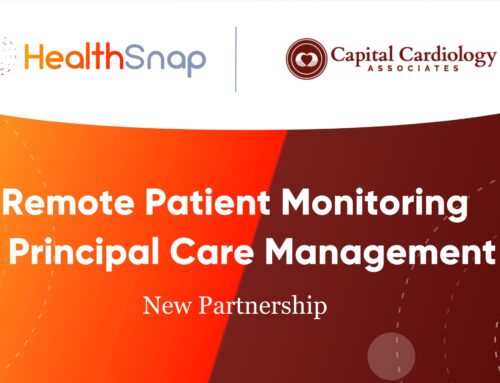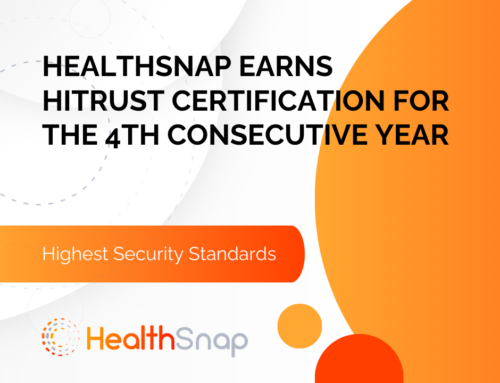By Wesley Smith, Ph.D. and Craig Flanagan, Ph.D.
Isn’t it great to see that U.S. government spending in healthcare is well-placed, proactive, and making a difference in saving lives? This is evident in the introduction of Remote Patient Monitoring (RPM) billing codes 99454, 99457, and 99458 by Medicare. These codes were established to enable healthcare providers to improve patient outcomes, reduce healthcare utilization, and lower the total cost of care through remote monitoring of physiological variables related to a patient’s medical needs.
-
Code 99454 is used when a patient transmits data for at least 16 days within a 30-day period.
-
Code 99457 covers communication with the patient, similar to a telehealth visit, and includes 20 minutes of clinical services related to the monitored variable.
-
Code 99458 is for each additional 20-minute unit of patient communication and relevant clinical services.
One of the most prevalent use cases of Remote Patient Monitoring for HealthSnap is hypertension, which the World Health Organization recognizes as potentially the largest condition associated with death worldwide. It currently costs the United States roughly $160 billion per year and is expected to rise to over $500 billion per year by 2050. So, we know we’re focusing on an extremely common and important clinical problem by working with these patients.
With the abundance of data and anecdotal evidence of high patient satisfaction—patients feeling more connected to their providers, gaining self-efficacy over their condition, and improving their health literacy through regular feedback from clinical staff reaching out on a regular basis—we wanted to see if patients attending the monthly calls (99457 and 99458) more regularly are performing better than others in the program. Additionally, we are interested in whether these calls and the associated bond established between the clinical staff member and the patient are increasing engagement.

Goal 1: The Association of Hypertension Care Management (99457 and 99458) on Combating Hypertension and Improving Patient Engagement (99454)
The first step of this HealthSnap analysis is to evaluate patients with baseline uncontrolled hypertension (≥130 or ≥80). These patients are grouped into quartiles based on program completion, defined by the number of CPT codes 99457 and 99458 completed per year, to assess improvements in blood pressure and their association with the frequency of RPM data transmission relative to total days on the program, or “Transmission Index” (TI%).
Most HealthSnap patients have Chronic Care Management (CCM) with RPM, so the analysis sought to eliminate CCM care coordination and patient consults as confounding variables. Therefore, the focus was solely on the 5,478 RPM patients with uncontrolled hypertension receiving care management services without CCM programs. These RPM patients were separated into quartiles based on the number of programs completed, corresponding to the CPT billing codes 99457 and 99458 (20 minutes of care management services, including live patient communication). The results clearly demonstrated that blood pressure improvements were associated with greater program completion (qualifying units of 99457 and 99458).
-
≤1 Unit Completion Per Year: –7.8 SBP / -4.7 DBP (n=1370)
-
1-12 Units Completed Per Year: -9.6 SBP / -5.9 DBP (n=1369)
-
12-15 Units Completed Per Year: -10.1 SBP / -6.2 DBP (n=1369)
-
15-30 Units Completed Per Year: -11.8 SBP / -7.1 DBP (n=1370)

Similarly, the data supports that CPT 99457 and 99458 are associated with increased patient RPM engagement and participation, as patients who complete more units tend to transmit data more regularly, indicated by a higher Transmission Index (TI%):
-
≤1 Unit Completion Per Year: 36.2% TI (n=1370)
-
1-12 Units Completed Per Year: 58.4% TI (n=1369)
-
12-15 Units Completed Per Year: 64.5% TI (n=1369)
-
15-30 Units Completed Per Year: 69.3% TI (n=1370)
These insights affirm the value of program completion (units of 99457 and 99458) in enhancing both health outcomes and patient engagement in RPM initiatives.

Goal 2: Determine the Relationship between RPM Patient Engagement (CPT 99454) and Outcomes Among All Patients Monitored for Blood Pressure
Another objective was to examine how the frequency of data transmission influenced outcomes among our entire blood pressure-monitored patient cohort, including those participating in corresponding CCM or Principal Care Management (PCM) programs, with or without care management services. Of these, 22,037 patients transmitted RPM data frequently enough to meet the CPT 99454 code requirements and showed an improvement from a baseline SBP of 135.5 by 8.2 mmHg to 127.3 (p < 0.0001). This was particularly impressive given that many of these patients were already within a controlled range at baseline. These “engaged” patients transmitted data on average 74.8% of the time.
In contrast, 17,951 patients transmitted data an average of 24.4% of the time and did not meet the CPT 99454 requirements of 16 days in a 30-day period, yet still significantly reduced their blood pressure by 5.8 mmHg from 138.2 to 132.5 (p < 0.0001). Patients who were sufficiently engaged to qualify for CPT 99454 demonstrated significantly greater improvements compared to those not meeting the CPT 99454 data transmission requirements (-8.3 mmHg vs. -5.8 mmHg; p < 0.0001). These findings suggest that meeting the CPT 99454 code requirements is associated with better patient outcomes, although patients transmitting data less than 50% of the time still derive benefits from the program.

Goal 3: Evaluating the Impact of Data Transmission Frequency on Blood Pressure Improvement Across Hypertension Severity Levels
Finally, we prioritized examining how different frequencies of data transmission per week affect outcomes in patients with varying levels of hypertension severity. At HealthSnap, we find it most accurate to compare the average of a patient’s first seven data transmissions to the average of their most recent seven measures. This approach accounts for day-to-day variability and potential learning effects.
Using a heat map table, we categorized four rows on the Y-axis: patients with an average baseline SBP of 130-139.9, 140-149.9, 150-159.9, and ≥160 mmHg. On the X-axis, we created columns based on data transmission frequencies: ≤3 days per week, 4 days per week, 5 days per week, and 6-7 days per week.

A clear relationship emerged between the frequency of data transmission and reductions in SBP, DBP, MAP, and conversion rates from uncontrolled to controlled blood pressure. For instance, patients with a baseline SBP of ≥160 mmHg who transmitted data less than or equal to 3 days per week saw improvements of 18.8 mmHg in SBP, 9.9 mmHg in DBP, and 12.9 mmHg in MAP.
Additionally, 10% transitioned from uncontrolled to controlled blood pressure, and 17% moved from Stage 2 to Stage 1. In contrast, patients with the same baseline SBP transmitting data 6-7 times per week achieved an average reduction of 33.9 mmHg in SBP, 16.8 mmHg in DBP, and 22.5 mmHg in MAP. Impressively, 31% converted to controlled status, and 32% improved from Stage 2 to Stage 1.

The Transformative Impact of CMS RPM Codes
In this concise yet comprehensive review of the alignment of RPM billing codes 99454, 99457, and 99458 with patient health, it’s clear that Remote Patient Monitoring is an innovative tool that should increasingly be recognized as the standard of care for the significant, prevalent, and burdensome chronic condition of hypertension.
The data unequivocally shows that RPM engagement and programming aligned with the spirit and intent of these codes translate into significant health improvements, effectively countering the pervasive challenge of hypertension and reducing downstream costs to the healthcare system, families, and patients’ quality of life. Patients are not only better managed but also more engaged, transforming routine medical care into an interactive, proactive partnership that can bridge gaps in healthcare access and equity through the remote delivery system.

This isn’t just a victory for healthcare providers and patients—it’s a compelling testament to the power of strategic government spending. By investing in these RPM initiatives, we’re equipping the healthcare system to address one of the most pressing and common health issues of our time. The evidence is clear: strategic insights derived from consistent data transmission and patient interaction lead to tangible health benefits.
We’re excited for a future where technology meets empathy, data meets action, and healthcare reaches new levels of effectiveness for countless patients. Let’s continue to champion these initiatives and watch as they help write a new chapter in preventative care.









